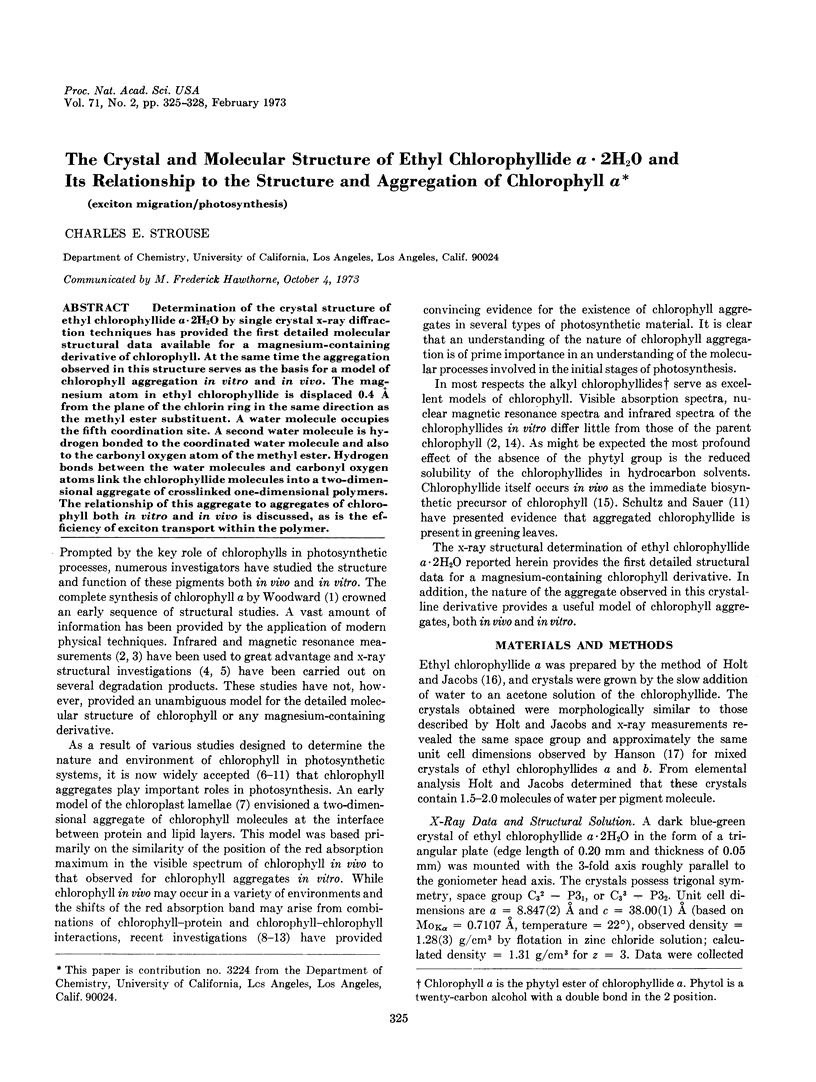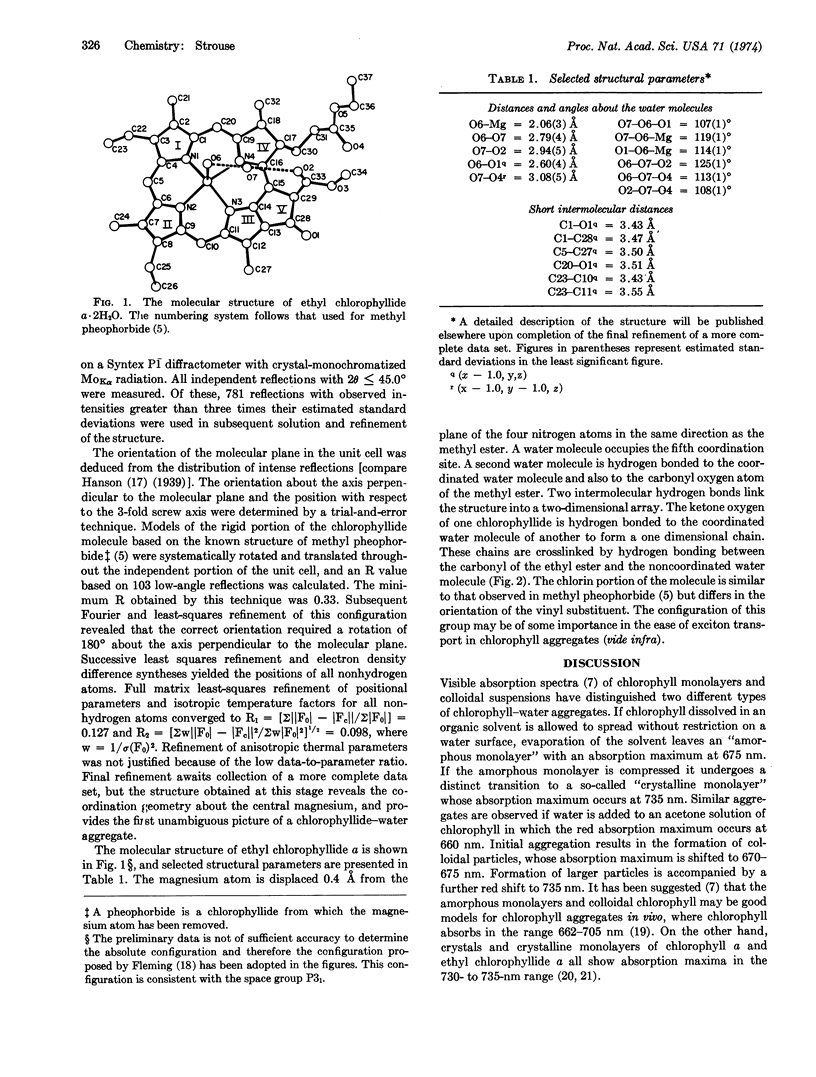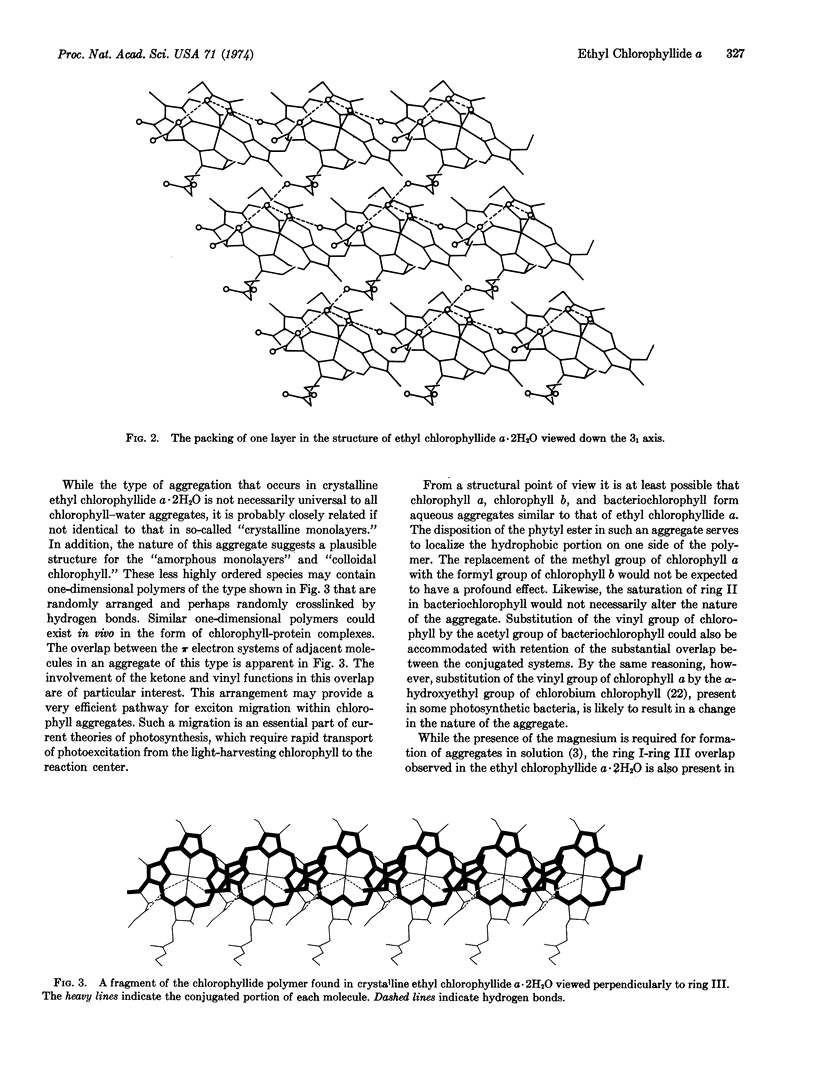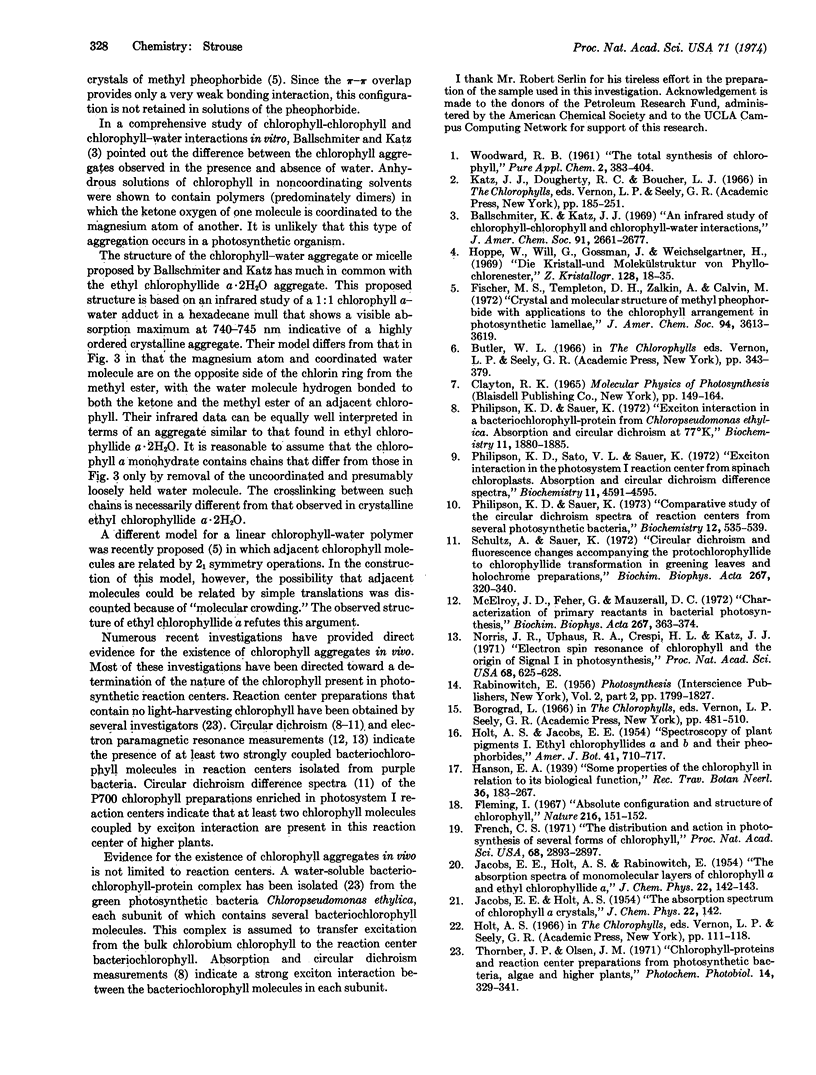Abstract
Determination of the crystal structure of ethyl chlorophyllide a·2H2O by single crystal x-ray diffraction techniques has provided the first detailed molecular structural data available for a magnesium-containing derivative of chlorophyll. At the same time the aggregation observed in this structure serves as the basis for a model of chlorophyll aggregation in vitro and in vivo. The magnesium atom in ethyl chlorophyllide is displaced 0.4 Å from the plane of the chlorin ring in the same direction as the methyl ester substituent. A water molecule occupies the fifth coordination site. A second water molecule is hydrogen bonded to the coordinated water molecule and also to the carbonyl oxygen atom of the methyl ester. Hydrogen bonds between the water molecules and carbonyl oxygen atoms link the chlorophyllide molecules into a two-dimensional aggregate of crosslinked one-dimensional polymers. The relationship of this aggregate to aggregates of chlorophyll both in vitro and in vivo is discussed, as is the efficiency of exciton transport within the polymer.
Keywords: exciton migration, photosynthesis
Full text
PDF



Selected References
These references are in PubMed. This may not be the complete list of references from this article.
- French C. S. The distribution and action in photosynthesis of several forms of chlorophyll. Proc Natl Acad Sci U S A. 1971 Nov;68(11):2893–2897. doi: 10.1073/pnas.68.11.2893. [DOI] [PMC free article] [PubMed] [Google Scholar]
- McElroy J. D., Feher G., Mauzerall D. C. Characterization of primary reactants in bacterial photosynthesis. I. Comparison of the light-induced EPR signal (g=2.0026) with that of a bacteriochlorophyll radical. Biochim Biophys Acta. 1972 May 25;267(2):363–374. doi: 10.1016/0005-2728(72)90123-5. [DOI] [PubMed] [Google Scholar]
- Norris J. R., Uphaus R. A., Crespi H. L., Katz J. J. Electron spin resonance of chlorophyll and the origin of signal I in photosynthesis. Proc Natl Acad Sci U S A. 1971 Mar;68(3):625–628. doi: 10.1073/pnas.68.3.625. [DOI] [PMC free article] [PubMed] [Google Scholar]
- Philipson K. D., Sato V. L., Sauer K. Exciton interaction in the photosystem I reaction center from spinach chloroplasts. Absorption and circular dichroism difference spectra. Biochemistry. 1972 Nov 21;11(24):4591–4595. doi: 10.1021/bi00774a027. [DOI] [PubMed] [Google Scholar]
- Philipson K. D., Sauer K. Comparative study of the circular dichroism spectra of reaction centers from several photosynthetic bacteria. Biochemistry. 1973 Jan 30;12(3):535–539. doi: 10.1021/bi00727a028. [DOI] [PubMed] [Google Scholar]
- Philipson K. D., Sauer K. Exciton interaction in a bacteriochlorophyll--protein from Chloropseudomonas ethylica. Absorption and circular dichroism at 77 degrees K. Biochemistry. 1972 May 9;11(10):1880–1885. doi: 10.1021/bi00760a024. [DOI] [PubMed] [Google Scholar]
- Schultz A., Sauer K. Circular dichroism and fluorescence changes accompanying the protochylorophyllide to chlorophyllide transformation in greening leaves and holochrome preparations. Biochim Biophys Acta. 1972 May 25;267(2):320–340. doi: 10.1016/0005-2728(72)90120-x. [DOI] [PubMed] [Google Scholar]


